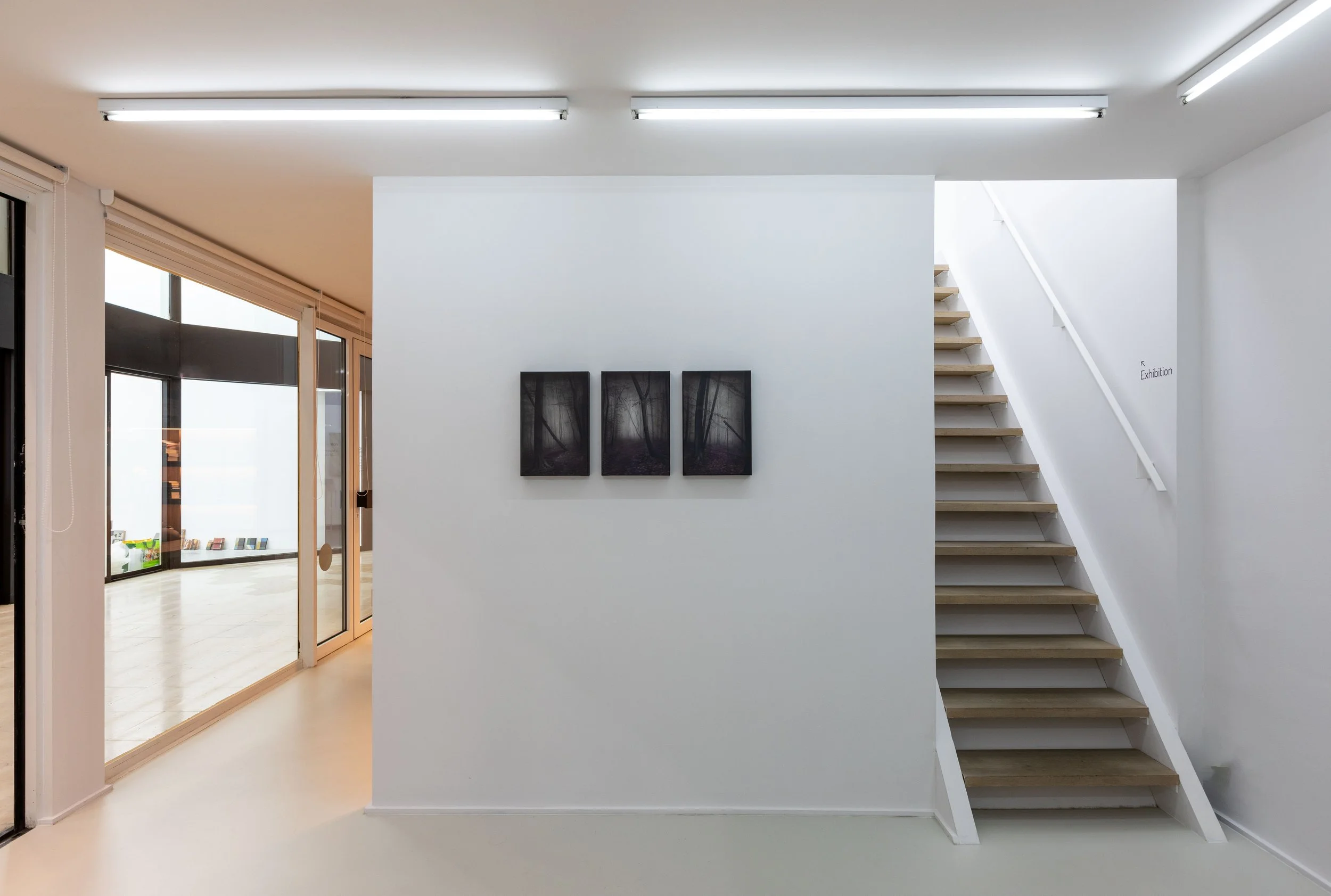Natacha Mercier Neverending Christmas
Natacha Mercier
Into the Twilight
03.11 > 21.12.24
Natacha Mercier's exhibition at the Michèle Schoonjans Gallery showcases two years of profound creative exploration, taking her work in a new direction while staying true to her original approach. After investigating classical themes like the nude, still life, and ethereal whiteness, she now delves into a new terrain—the forest and the night. It seems only fitting that an artist who has long probed the limits of vision would turn to darkness, where all forms dissolve. This shift allows her to continue her quest to materialize the fleeting, the intangible, and the unrepresentable.
Mercier’s journey into the night and forest becomes a new way to explore light—this time through its near absence. The forest, with its infinite interplay of shapes, shadows, and light, serves as a vast experimental ground. In her Queens series, Mercier displays a wide array of compositions and light treatments. Drawing inspiration from her childhood memories of nocturnal walks, she reconstructs a fictional forest, where glimpses of distant light filter through the trees. The soft glow creates a blur, evoking an interplay of space and time that is elusive yet immersive. In works like “Je n'ai pas peur du vide”, the viewer is invited to experience a night-time forest walk as both a leap into the unknown and a deeply introspective journey.
There’s a paradox at play in these works. Though darkness traditionally hides and obscures, Mercier’s paintings offer a tangible materiality, almost as if the night itself has form. Through a process of reduction, she reveals the subtleties of nighttime light, and this sparse illumination sharpens our perception, turning absence into presence.
Her paintings’ smooth surfaces oscillate between opacity and transparency, between concrete materiality and illusion. Stripped of cultural references, her nocturnal landscapes invite a pure exploration of life and experience, revealing night’s role as a primal source of creativity. The self-portrait “Quand je regarde le monde” (When I look at the world) deepens this theme, with Mercier masking her face and viewing the world through her hands. This gesture signals the withdrawal from external distractions necessary for creation, suggesting that true artistic vision requires detachment from the world’s blinding light, allowing an inner, introspective gaze to emerge.
Her black paintings seem to ask one central question: What happens at night, in the silence of sleep? In “Into the Twilight”, Mercier offers a contemplative answer, leading us through the mysterious pathways of the night, where vision, thought, and emotion entwine in profound ways.

















